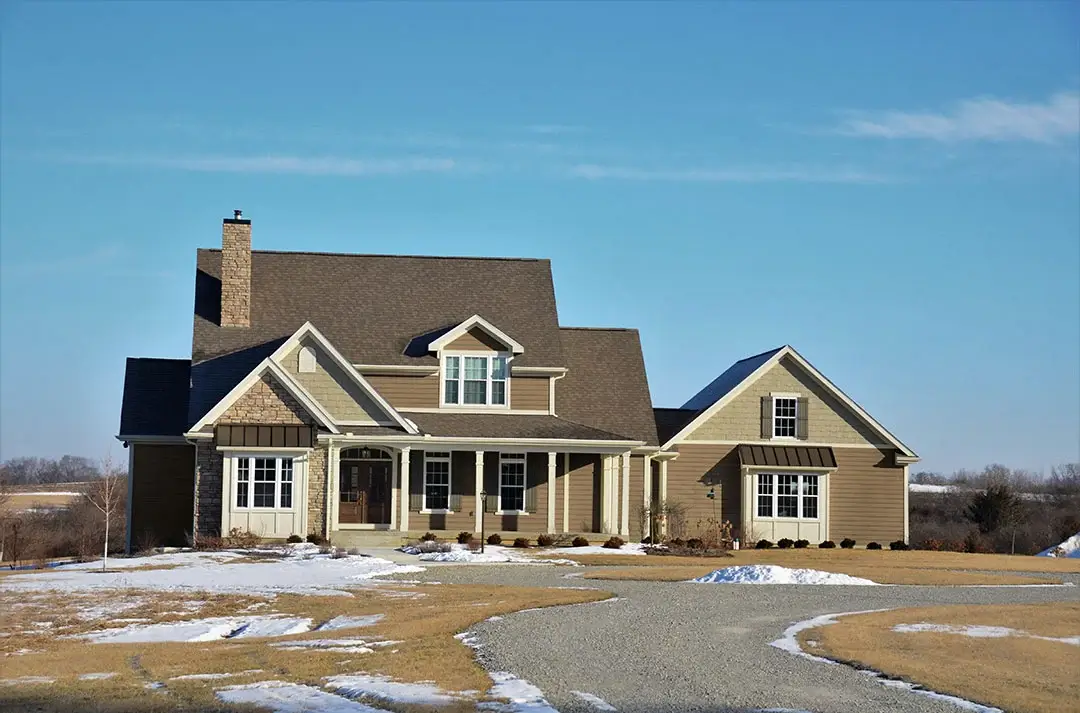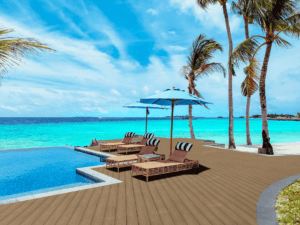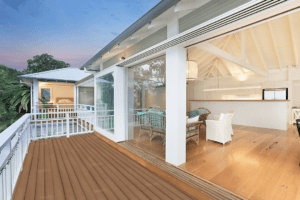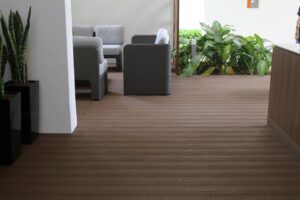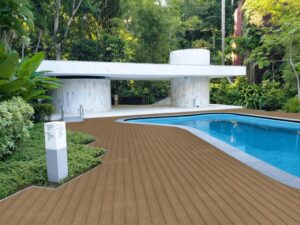How Long Does Composite Cladding Last?
Composite cladding is gaining traction as a great option for homeowners looking to upgrade their existing exterior walls, thanks to their low maintenance quality and aesthetic appearance. Since they’re made from durable wood fibers and plastic polymers, they can be a good alternative to traditional wood cladding.
However, as with any building material that isn’t concrete (concrete lasts a lifetime anyway), even composite claddings have a limited lifespan. So if you’re looking to use them, it makes perfect sense to understand how long they last compared to other traditional materials to make an informed decision.
In this guide, we’ll talk about exactly how long they last, what factors affect their lifespan, and the benefits of using them for your exterior wall project. Let’s get started.
How Long Does Composite Cladding Really Last?
Composite cladding actually lasts for 25 years or tops, and this lifespan depends on different factors. Aside from proper installation, the quality of the material usually determines the overall lifespan of a composite cladding.
High-quality wood fibers, plastics, and additives play a significant role and generally means your cladding will last longer and perform better than cladding with low-quality materials. Proper installation also plays a role—if not installed properly, it can lead to water penetration and structural damage.
Aside from material and installation, another factor is whether the cladding is maintained regularly. Although they’re low-maintenance in nature, they still need regular maintenance but with minimal upkeep compared to their traditional counterparts. You can maintain them by regularly cleaning and inspecting them for any major issues.
It’s best to address minor issues as soon as possible to prevent them from becoming major ones. Environmental and geographical factors also play a role, and while composite cladding boards are generally weather-resistant, that resistance varies depending on the quality of the material used.
READ MORE: Advantages of WPC Cladding [2024 Latest Guide]
Overall, if your cladding choice is made with top-quality materials, and you can ensure proper installation and regular maintenance, you can rest assured your cladding will last 25 years or even longer. Below, we delve deeper into these factors.
Factors Affecting the Lifespan of Composite Cladding
Four different factors affect the overall lifespan of composite cladding. Understanding these can give you insights and better decision-making when choosing an external wall solution.
Quality of Composite Cladding
The quality of the cladding itself is a major determining factor in its lifespan. If the cladding is made with low-quality materials, you can expect a shorter lifespan and vice-versa. High-quality ones often contain durable polymers and virgin plastic, making them resistant to the weather and elements.
According to numerous scientific studies in the Journal of Applied Polymer Science, good quality polymers and additives make plastic materials possess good corrosion and weather resistance. In the same way, if your cladding is made from high-quality materials, you can expect a good lifespan from it.
Proper Installation
Installing a cladding system the wrong way can pave the way for water intrusion and structural issues later on. It might look and feel correct at first glance, but if not installed properly, issues may start to appear in a few weeks, reducing the lifespan of your cladding.
To ensure proper installation, you can refer to the manufacturer’s instructions if you’re DIYing or get a professional contractor to do it for you—though we recommend getting pros to do it for you so you can get longer warranty coverages.
Regular Maintenance
Routine and consistent maintenance play a pivotal role in making your composite panel cladding last long. If you’re wondering why, mold, mildew, and dirt can’t just make your panels look dirty, they can also damage them.
With regular maintenance and inspection, you can get rid of them and ensure your cladding is always looking good as new. Regular inspection also helps you see minor issues and prevent them from becoming worse over time.
Environmental Factors
If you’re living in a hot, humid area, chances are your cladding will last a bit shorter than in areas where there’s a moderate climate. UV radiation, excess moisture, and messy temperature changes can wreak havoc on your cladding system, potentially shortening its lifespan.
However, there are composite cladding boards that possess exceptional weather-resistance and even fire-retardant properties, perfect for fluctuating weather and excess UV radiation, though they often come with heftier price tags.
Benefits of Long-Lasting Composite Cladding
Composite cladding offers many benefits that make it a great exterior walling choice for homeowners and architects. Here are four advantages of composites:
1. Lower Total Cost of Ownership
Since composites don’t need elaborate upkeep and maintenance processes, the total cost of ownership is significantly lower compared to more traditional types of cladding, as those require more tools and equipment to maintain.
2. Increased Curb Appeal and Property Value
Regularly maintained composite cladding doesn’t just protect your exterior walls from the elements, it also makes your property pretty and welcoming—which can also potentially increase its resale value.
3. Reduced Maintenance
Though they still require regular maintenance, you only need to do it minimally. All you need to do to clean them is to hose them down with water, brush them with mild soap, and you’re done.
4. Peace of Mind
A growing number of homeowners are particularly fond of composites because of their long-lasting nature—even when storms and other weather disturbances hit, they’re at peace knowing their cladding is literally an armor cladding for their house.
Choosing the Right Composite Cladding For Your Project
When choosing the best composite cladding for your project, there are factors you need to consider so you can choose the right one for you.
Durability Needs
If you live in an area where harsh weather is common, it’s best to choose a cladding that meets a good durability and weather-resistance rating so you can ensure longevity.
Style and Aesthetics
More than pieces of your wall, cladding is also an aesthetic material that should enhance and complement the overall look of your property. You can get an exterior designer or an architect to help you out with this.
Budget
Always consider your budget when choosing a cladding, since brands price their products differently, you need to take into account your chosen material costs and even installation costs.
Warranty Offered
High-quality cladding materials often have longer warranties and vice-versa. Consider every budget tier and compare their warranty coverages so you can ensure you get the most out of your every penny.
Regarding your budget, using our cladding calculator can help you estimate possible material costs. To use it, just input your project’s required cladding dimensions, installation orientation (vertical or horizontal), product type, fascia dimensions, and additional optional accessories.
Build Your Dream Outdoor Projects with Oakio!
All in all, composite cladding that comes from reputable brands like Oakio boasts an impressive lifespan, lasting 25 years or more depending on the factors we’ve tackled. Aside from its long lifespan, it also boasts impressive weather and resistance, and even fire-retardant qualities!
So if you’re ready to start your cladding project, turn to Oakio—a pioneer in composite wood product manufacturing and innovation! We offer a wide range of cladding solutions specially crafted for your project! Our cladding is also backed by industry-dominating warranty periods, a testament to the longevity of our products.
It’s time to go composite!
Sign up for a newsletter today and stay updated with the latest industry news and how-tos, and be the first one to get our subscriber-only promos and special offers!
Trending Reading
What Are the Differences Between the WPC Board and PVC Board?
[2024 Update] How Long Does WPC Decking Last?
